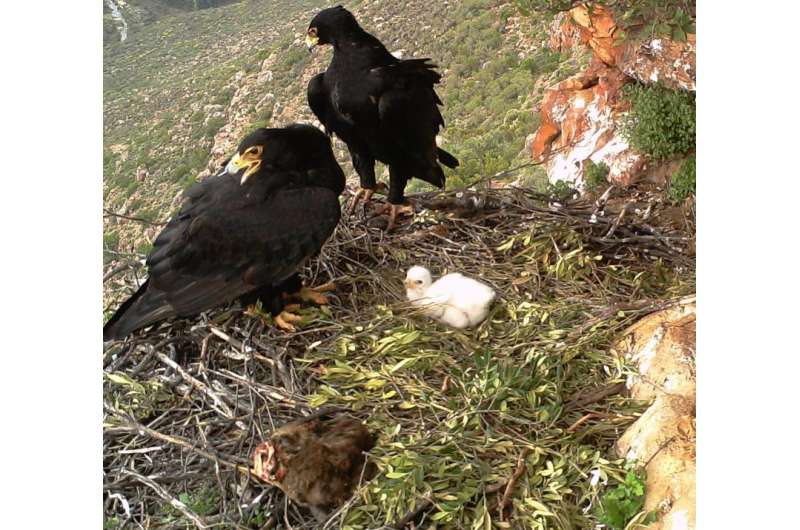Eagles and agriculture coexist in South Africa

To biologists' surprise, an eagle population living in a South African landscape dominated by agriculture appears to be thriving, according to a new paper in The Condor: Ornithological Applications—even out-performing their neighbors in undeveloped mountain habitat.
Verreaux's Eagles (Aquila verreauxii), an apex predator in southern Africa, are in decline, and Megan Murgatroyd of the University of Cape Town and her colleagues wanted to determine if habitat loss due to intensifying agriculture could be the culprit. Instead, when they compared the breeding productivity of eagles in South Africa's heavily farmed Sandveld region to that of the smaller population of eagles in the nearby Cederberg Mountains, they found that the Sandveld population's breeding success was actually the highest of any Verreaux's Eagle population ever studied.
Mugatroyd and her co-authors speculate that the eagles' prey base could be more available and diverse in the Sandveld, and that the gentler terrain could take less energy to navigate. However, the researchers caution that there may be a threshold of agricultural transformation beyond which the Sandveld region's population would begin to struggle. They recommend that management in the Sandveld region should focus on identifying and eliminating any potential sources of eagle mortality, such as wind energy development.
Murgatroyd and her colleagues monitored eagle nest sites in the two areas over four years, visiting them every two to three weeks during the breeding season. "It has been a huge privilege to undertake fieldwork in this part of South Africa," says Murgatroyd. "The Cederberg is a beautiful natural wilderness area, so we were surprised when it became apparent that the Verreaux's Eagles breeding there are far less productive than those in the Sandveld, which has been extensively converted for agriculture since the 1980s. This comparison has highlighted the potential importance of an agricultural landscape to Verreaux's Eagles, but further research, in particular with a focus on adult and subadult survival rates, is still needed for a better understanding of the long-term persistence of these populations."
More information: "The influence of agricultural transformation on the breeding performance of a top predator: Verreaux's Eagles in contrasting land-use areas" will be available February 10, 2016, at www.aoucospubs.org/toc/cond/118/2
Provided by The Condor
















